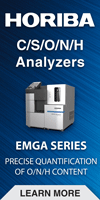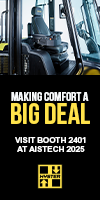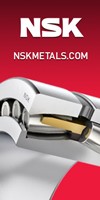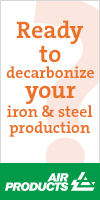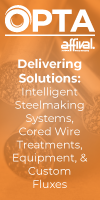NLMK Reports Q3 2010 RAS Financial Results
11/15/2010 - Novolipetsk Steel has announced its Q3 2010 Russian Accounting Standards (RAS) financial results for its major companies. In Q3 2010, NLMK (the main production site) and NSMMZ (the main Long Products Division company) reported revenue increases to RUR47.8 billion and RUR9.3 billion, respectively.
Novolipetsk Steel has announced its Q3 2010 Russian Accounting Standards (RAS) financial results for its major companies. In Q3 2010, NLMK (the main production site) and NSMMZ (the main Long Products Division company) reported revenue increases to RUR47.8 billion and RUR9.3 billion, respectively. These companies represent 98% of total Group steel production capacity.
NLMK’s main production site net profit increased by 18.43% quarter-on-quarter to RUR13.8 billion. NSMMZ’s operating performance showed a positive trend driven by improved demand for long products that allowed the company to run at almost 100% capacity.
Key results included:
Lipetsk production site reports higher net profit: The 2% quarter-on-quarter (q-o-q) and 31% year-on-year (y-o-y) revenue growth was mainly the result of higher realized prices and an increased share of high-value-added (HVA) products in the sales mix.
Gross profit increased by 18% y-o-y due to the significant growth of steel product prices but declined q-o-q due to higher production costs.
The net income q-o-q increase (+18%) is mainly attributable to foreign currency exchange gains. Y-o-y net income increased by 2.5 times due to the absence of one-off losses, as occurred last year.
Lower sales volumes for VIZ-Stal: Revenue decreased by 15% q-o-q mainly as a result of lower sales volumes. The y-o-y revenue decrease of 26% was driven by a decline in electrical steel prices.
Lower gross profit q-o-q was also impacted by the rise in prices for hot-rolled steel that is used as substrate for electrical steel production. This product is supplied by the Lipetsk production site.
VIZ-Stal’s net profit decreased mainly due to lower profit from its core business activities.
Slight reduction in Stoilensky’s financial performance: A reduction in iron ore prices was partially offset by higher sales volumes resulting in a 3.5% decrease in revenues q-o-q. The y-o-y revenue increase of 97% was led by higher sales prices for iron ore concentrate and sinter ore.
Lower revenues were the major factor in a 6% q-o-q gross profit reduction. The 164% y-o-y gross profit increase was mainly driven by higher sales revenues in 2010.
The lower q-o-q net profit was mostly due to the reduction in operating profit. The y-o-y net income increase of 178% was driven by higher sales prices for iron ore in 2010.
Higher sales and improved financial performance for NSMMZ: The company continued to increase its sales volumes both through long product deliveries to the domestic market and also by billet exports. The total growth of steel product sales amounted to 53% q-o-q, which helped improve sales revenues, also by 53% q-o-q. The y-o-y revenue increase amounted to 58%.
Steel product prices were ahead of scrap prices driving the company’s gross profits up to 60% q-o-q. The y-o-y gross profit multiplied three-fold.
The company’s net losses are still determined by high debt leverage. Nonetheless, a strong operating performance allowed NSMMZ to significantly improve both its q-o-q and y-o-y financial results.
Higher net profit for Altai-Koks: A slight reduction in sales prices resulted in an 11% q-o-q revenue decline at Altai-Koks. Y-o-y revenue growth of 78% was due to higher 2010 sales prices for coke-chemical products.
Gross profit declined by 40% q-o-q mainly driven by lower revenues and higher operating costs affected by higher coal prices. Nonetheless, the company’s gross profit increased by 38% y-o-y.
Lower product prices resulted in a decline in operating and net income by 42% and 57% q-o-q. As compared to the third quarter of the last year, these numbers grew by 84% and 35% y-o-y, respectively.
Better financial results for NTK: In Q3 NTK’s sales revenue more than doubled but gross profit did not follow this trend. This is explained by a purchase/sales transaction being reflected in the financial statement of the entity: NTK acquired open wagons for the benefit of third parties at an auction in June 2010. NTK is currently using these wagons through an operating lease. The company expects this will be an additional factor that may improve NTK’s financial performance in Q4 2010.
Higher shipping volumes, using in-house rolling stock, coupled with a higher fleet load drove the company’s gross profit up 32% q-o-q. Optimization of the structure of the rail car fleet had an additional positive impact on NTK’s Q3 financial performance.
NTK has reported sustainable y-o-y growth in financial performance. Operating and net income increased by 58% and 45% on a y-o-y basis, respectively.


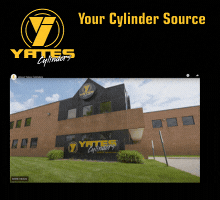
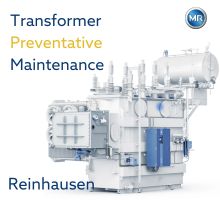-(220-x-200-px)-(130-x-130-px)-(220-x-200-px).jpg?lang=en-US&ext=.jpg)
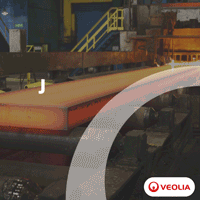Veolia.gif?width=200&height=200&mediaprotectionhash=4deca34a0d5a00013b5a0ccdc2dcf98fd2c17aabb57eb7bbb27200552f29c247&ext=.gif)
